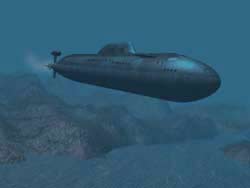The operational area of a conventional submarine is underwater, and when an accident occurs beneath the surface, the situation becomes far more serious compared to incidents involving surface vessels; rescue, protection, and recovery efforts are significantly more challenging. To prevent unforeseen incidents, submarine experts have equipped the vessel with a specialized distress signaling system.
 |
(Image: arrakis) |
The distress signaling system on conventional submarines typically employs signaling devices to address urgent situations. There are many types of signaling buoys available, featuring various designs. Regardless of the type, they consist of components such as buoyancy material, metal, steel wire, electrical cables, and flashing signal lights. When a submarine faces an emergency, the signaling system can be activated, allowing the necessary signaling buoy to be deployed from within the vessel. The metal buoy will float to the surface, featuring bright colors to facilitate rescue teams’ search efforts.
Additionally, the flashing signal lights utilize a specific distress signal pattern and timed intervals to ensure timely detection.
When rescuers spot the distress buoy following an accident, they can use the electrical cable to provide power to the submarine and activate the signaling buoy to connect via an installed phone. This enables them to communicate with the submarine, ascertain the cause of the incident, evaluate the damage, and formulate a rescue plan.


















































